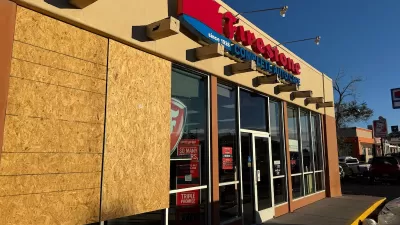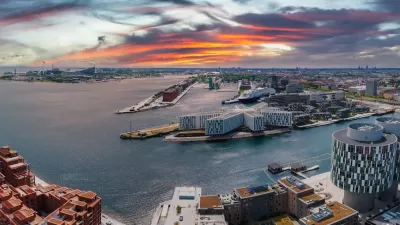Preservation officials fight to save a storm-worn historic house, but the ongoing battle with local home owners leads to major negative impacts on the neighborhood.
Following a tornado which caused extensive damage to a historic home in the Five Points Historic District in Huntsville, Alabama, the late owner's family members, who had been living in the home since his death, have requested the building be torn down. The Huntsville Historic Preservation Commission, however, continues to deny their request. "There is a constant attrition of historically significant houses that seems to be going on," stated the chair of the Commission, Jack Burwell. "If we let everyone who wants to tear them down do that, that goes against what the historic district is all about."
The house, which is believed to have been built around the 1920's, is caught in the middle of an ongoing battle between Burwell and the home owners' attorney, Buck Watson. "'If it was fixed up,' said Burwell, 'it could be an attractive early structure.' Watson, however, says it makes no sense to pay $135,000 or more for repairs on a house that's now for sale for $89,900."
Despite the uncertainty of the building's future, one thing is for sure: the longer it sits in its current state, the greater the negative impact it has on the neighborhood. "It has lowered the property values of every building on our block. It is an eye sore for the whole 5 Points area," claims neighboring property owners. "It has and continues to attract homeless and other vagrants to the street. They camp on the porch and break into the building."
FULL STORY: Historic preservation officials, Five Points homeowners at odds over tornado-damaged house

Alabama: Trump Terminates Settlements for Black Communities Harmed By Raw Sewage
Trump deemed the landmark civil rights agreement “illegal DEI and environmental justice policy.”

Planetizen Federal Action Tracker
A weekly monitor of how Trump’s orders and actions are impacting planners and planning in America.

The 120 Year Old Tiny Home Villages That Sheltered San Francisco’s Earthquake Refugees
More than a century ago, San Francisco mobilized to house thousands of residents displaced by the 1906 earthquake. Could their strategy offer a model for the present?

Indy Neighborhood Group Builds Temporary Multi-Use Path
Community members, aided in part by funding from the city, repurposed a vehicle lane to create a protected bike and pedestrian path for the summer season.

Congestion Pricing Drops Holland Tunnel Delays by 65 Percent
New York City’s contentious tolling program has yielded improved traffic and roughly $100 million in revenue for the MTA.

In Both Crashes and Crime, Public Transportation is Far Safer than Driving
Contrary to popular assumptions, public transportation has far lower crash and crime rates than automobile travel. For safer communities, improve and encourage transit travel.
Urban Design for Planners 1: Software Tools
This six-course series explores essential urban design concepts using open source software and equips planners with the tools they need to participate fully in the urban design process.
Planning for Universal Design
Learn the tools for implementing Universal Design in planning regulations.
Clanton & Associates, Inc.
Jessamine County Fiscal Court
Institute for Housing and Urban Development Studies (IHS)
City of Grandview
Harvard GSD Executive Education
Toledo-Lucas County Plan Commissions
Salt Lake City
NYU Wagner Graduate School of Public Service





























